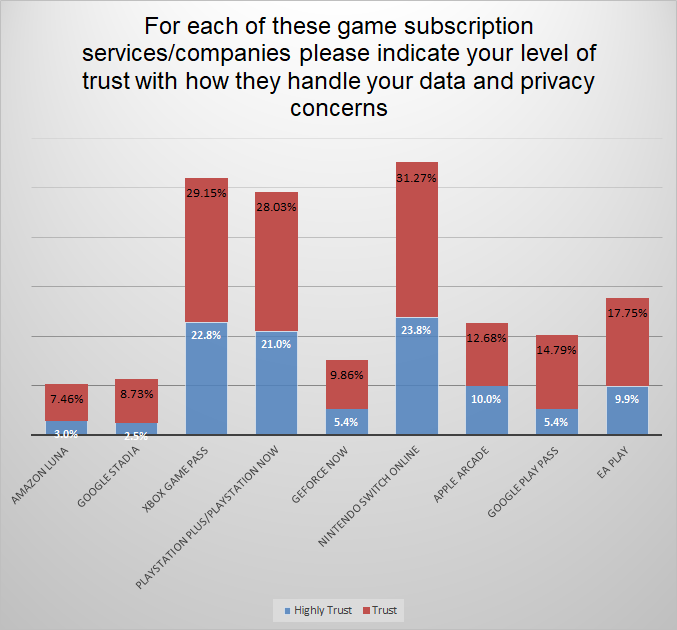One of the biggest issues of 2022 has been the potential Microsoft acquisition of Activision Blizzard. DFC Intelligence continues to argue that events of recent months indicate the deal is should get approved.
Multiple Government Agencies Review the Deal
There are several agencies around the globe looking at the Microsoft acquisition from a regulatory perspective. Saudi Arabia and Brazil have given approval, but the big three regulators are still in the review stage. This includes the U.S. Federal Trade Commission (FTC), the European Commission (EC), and the U.K. Competition & Market Authority (CMA).
A decision from the FTC has been expected for some time and could come by the end of the year. However, while the FTC could announce the approval of the deal, it could also launch phase 2 of the investigation. There is a similar situation with the EC. In mid-November, the EC is expected to complete phase 1 of its investigation and announce either approval or the launch of phase 2 for more research.
The U.K. Competition & Market Authority conducted its phase 1 from July to September and has launched a phase 2 investigation that is expected to last until March 2023. After phase 1, the CMA expressed two major theories of harm. In mid-October, Microsoft replied with a detailed 33-page statement addressing the CMA’s concerns.
Microsoft has Responded to CMA Concerns
Looking at the CMA concerns and how Microsoft has addressed those concerns, DFC continues to believe the Activision Blizzard acquisition will receive approval. However, this is not likely to occur until mid-2023.
As mentioned, the CMA announced two theories of harm it was investigating. Theory of Harm One is that Activision Blizzard’s game catalog will enable Xbox to foreclose its competitors in gaming markets. Of course, mainly that competitor is Sony and the PlayStation brand.
The bulk of Microsoft’s initial response to the CMA dealt with the first theory of harm. The focus was on Call of Duty and Sony’s market leadership position. Of course, Microsoft made note of the fact that Nintendo platforms do fine without Call of Duty.
CMA’s Theory of Harm 2 suggests Microsoft will have an advantage over rivals in cloud gaming by having a broad “multi-product ecosystem including a leading cloud platform and PC operating system.
Microsoft dismisses the second theory as a “novel theory of harm without any precedent.” Theory 2 is probably the larger issue, but Microsoft spends only a small portion of its response deflecting the concerns to the “nascent cloud gaming segment.”
However, glib Microsoft’s response to Theory of Harm 2 appears, the company is correct when it states “like Theories of Harm 1 (a) and 1(b), this theory focuses on the concerns of competitors, rather than consumers.
Will Consumers be Harmed or Just Sony?
The heart of the matter is really about whether consumers will be harmed by a merger. Regulators focusing on Sony’s ability to drive sales of its highly exclusive video game platform should come to the conclusion that the merger is not a big deal. However, even assuming regulators started to look at the issue of consumer harm the deal is likely to be approved.
The major issue from a consumer perspective is that Microsoft controls the operating system and business applications so they can cram products down consumers’ throats. As discussed in a previous article, Game Pass can be a nasty Trojan Horse that impacts user settings on other applications. This matters because many businesses trust and rely on Microsoft products. However, if consumers start to lose that trust they have other options, including Google and Apple.

Will Combining Games with Business Apps Erode Confidence in Microsoft?
Microsoft is a highly trusted brand but as games become a major part of that ecosystem there is a danger of that trust eroding. A whole bunch of consumers using Microsoft products for leisure time could undermine the security of other Microsoft applications. Does a business want to let an online game service hijack its IT system? The danger to Microsoft is that combining its core products with a mass game service will lead businesses to flock to competitors.
Right now, many corporations are afraid of Google’s business products because of security concerns. Meanwhile, a younger generation, including many students, are being taught to use Google Docs, Slides, and Sheets over Microsoft Word, PowerPoint, and Excel. Microsoft’s current advantage is the trust factor. Consumers should be concerned about trusting a game service that can easily access important applications and core PC settings.
The Microsoft merger is likely to go through because 1) it appears government regulators are looking mainly at the impact on competitors, not consumers, and 2) consumers have options to avoid Microsoft products (although it does take effort).
In addition, the CMA, appears focused on a hypothetical cloud future. This cloud future is not here yet and there are plenty of large competitors Microsoft will have to deal with in the space. It is hard to see how some first-person shooters and games with orcs and dwarves will give Microsoft a major advantage in the large cloud space.
Overall, with the exception of Sony, major Microsoft competitors are not likely to be harmed by the merger. Meanwhile, consumers can go elsewhere if they don’t like what Microsoft is doing.
Approval may not occur until mid-2023 but DFC expects the deal to go through. Of course, the U.K. CMA is the big wild card and investors are probably smart not betting big on a completed deal..
The CMA, with its misguided focus on Sony, is concerning given some recent trends. Last week the CMA ordered Meta to sell its substantially smaller acquisition of Giphy, a company that provides GIfs for use on social networks like Facebook.
The bigger question is whether Activision Blizzard will drive growth for Microsoft in games. This is far from certain. Indeed, there is the potential for Activision Blizzard to be a major hindrance to Microsoft’s growth.

